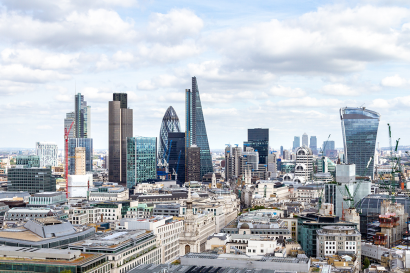AG INSIGHT | 02/03/2023
The UK has a small but closing window to secure its status as a net zero leader

James Fotherby, Policy Officer at the Aldersgate Group. explores how the UK must adapt to deal with new international competition and secure the economic benefits of net zero.
For much of the 21st century, the UK has led from the front in global efforts to tackle climate change. We were the first major economy to set a legally binding commitment to cut greenhouse gas emissions in 2008 (upgraded to a net zero target in 2019), have successfully scaled the volume of renewable energy generation from 6.9 per cent in 2010 to 37 per cent in 2019, and hosted the Glasgow Climate Change Conference (COP26) in 2021.
Despite the achievements of successive governments, a failure now to set out further policies to align the economy with net zero leaves the UK at risk of being leapfrogged by the likes of the US and EU, who have both recently set out ambitious economic plans to attract green investment.
The challenge of the Inflation Reduction Act
Last year, the US passed the Inflation Reduction Act (IRA), a ten-year $369 billion programme of targeted subsidies and tax reliefs for green industries and technologies. At its heart, IRA is an industrial plan which sends strong market signals to investors and businesses that the future of the US economy is green. Whilst initially lauded for its ambition, countries are now concerned the Act will pull investment and businesses towards the US.
Unlike the EU, which has launched its own Green Deal Industrial Plan in response, the UK Government has indicated it doesn’t plan to respond to the IRA – at least immediately. It is clear, though, that UK businesses are already being enticed. UK electric-van start-up Arrival, for example, has announced it is halving its workforce to reduce costs as it seeks US expansion. This should be cause for concern considering Arrival secured the highest ever valuation for a British company on America’s Nasdaq Stock Market in 2021.
It’s not just innovative start-ups that are concerned about the UK’s lack of competitive offering either, large British businesses hold similar reservations. The Global Britain Commission – made up of Virgin Atlantic, Rolls Royce SMR, Coutts and others – recently wrote to the Prime Minister warning that the UK risks being “left behind”.
Whilst the UK will struggle to compete with the IRA in terms of scale of investment, there is lots the UK can still do to ensure it remains an attractive place to do business. Above all, the Government must lay out strong policy and regulatory signals to carve out areas of market opportunity in developing green sectors, such as offshore wind, CCS, and green finance.
Provide businesses with strong policy signals
Political and economic uncertainty is inhibiting businesses’ ability to plan and invest in net zero. Setting out a stable and long-term policy framework will not only reduce the risk of investment in low-carbon options but will ensure market confidence in low-carbon sectors is not undermined.
Past examples of stop-start policies, such as the sudden termination to funding for energy efficiency programmes or CCS funding competitions, has been detrimental to investor confidence, supply chain growth, and investment in skills.
The upcoming update to the Green Finance Strategy and the Net Zero Strategy refresh, supported by the Spring Budget, are major opportunities to set out these clear policies, with timelines and expectations, for businesses.
Enable investment through a comprehensive regulatory framework
When well designed and properly enforced, businesses don’t see regulation as burdensome. In fact, according to a recent survey, a majority of UK CEOs and senior business leaders are relying on policy and regulatory changes to help reach their company’s net zero ambitions.
With the necessary public policy in place, the Government must lay out a comprehensive regulatory framework to provide certainty and a level playing field for businesses.
A good example of where regulation can support private investment is Solvency II, which guides how insurers are run and where they invest. The Government has proposed to reduce the amount of capital insurers are required to hold in reserve and broaden the range of assets pension funds can invest in. The Association of British Insurers estimate that these reforms could release over £100 billion of capital over the next decade which could be directed towards social housing, levelling up and green infrastructure.
The challenge, though, is that insurers could instead opt to use this capital to pay dividends, invest abroad, or invest in carbon-intensive assets. To ensure these reforms help future-proof the UK economy, the Government must put restrictions on how this capital can be invested – such as by aligning potential infrastructure spending with the UK Green Taxonomy.
Upcoming policy announcements in March offer the Government a moment to set out a robust response to the US, by setting out a clear policy and regulatory framework to ensure the UK maintains its competitive advantage in the low-carbon economy. Without this, the UK runs the risk of missing out on the “growth opportunity of the 21st century”.



